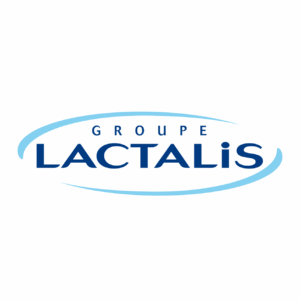Introduction to Clarins
Clarins, a revered name in the beauty industry, has been synonymous with natural skincare and makeup innovation since its establishment. Founded in 1954 by Jacques Courtin-Clarins, the company has built its reputation on a foundation of plant-based formulas and a commitment to enhancing natural beauty.
Beyond its dedication to efficacy and luxury, Clarins is deeply committed to sustainability, recognizing the importance of preserving the environment and promoting ethical practices. Through sustainable ingredient sourcing, eco-conscious packaging initiatives, and philanthropic endeavors, Clarins demonstrates its pledge to minimizing its ecological footprint and fostering social responsibility.
It’s all about you
Criteria
Carbon Footprint, Medium
- At the first level, which includes emissions produced directly by the company, Clarins has taken significant steps to reduce its carbon footprint from its own operations, including vehicles and installations. The company reached carbon neutrality in 2020 through emission reductions and compensation programs, with a further commitment to reduce its carbon footprint by an additional 30% by 2025.
- At the second level, which involves emissions indirectly generated, Clarins focuses on eco-design approaches to assess and reduce environmental consequences, striving for impact reduction at industrial sites. Packaging materials are a key focus for reducing greenhouse gas emissions, with a significant portion of recyclable packaging materials already in use.
- At the third level, which includes emissions generated by suppliers, Clarins collaborates with various organisations like the Global Shea Alliance and Responsible Mica Initiative for sustainable production practices. Through initiatives like the Seeds of Beauty reforestation program and partnerships for social and environmental causes, Clarins actively contributes to biodiversity preservation and reforestation efforts.
Ecological Impact, Medium
Clarins has made significant efforts to reduce its environmental impact and promote sustainability: The company is committed to using 100% recyclable packaging for all products by 2025.
Clarins aims to achieve plastic neutrality by 2025, focusing on new recycling and offset programs, along with a 30% reduction in plastic usage. They have been committed to fair trade practices, working with 18 fair businesses globally while protecting plant biodiversity.
While Clarins is primarily known for skincare and beauty products rather than fabrics, their commitment to sustainability extends to various aspects: The company emphasises using organic plant extracts in their products, with over 40% of ingredients being organic.
Clarins operates the Domaine Clarins in the Alps, where they grow organic, high-quality ingredients using sustainable farming practices.
Energy Consumption, Medium
The focus of Clarins’ sustainability initiatives seems to be more on packaging, ingredient sourcing, and carbon neutrality rather than specific energy consumption reduction strategies.
While Clarins has made strides in sustainability, there is potential for them to enhance their efforts by incorporating energy-saving measures into their operations.
Implementing energy-efficient practices in manufacturing facilities, distribution centers, and offices could further reduce their carbon footprint and environmental impact.
Freight Density, Medium
Analyzing the makeup brand company Clarins from the perspective of freight density optimization involves considering how the company can improve the efficiency of shipments and transportation of products.
- Efficient Packaging: Clarins can optimize freight density by ensuring efficient packaging that maximizes the use of space in shipments. Using packaging materials that are compact and lightweight while still protecting the products can help increase the number of items transported in a single shipment.
- Consolidation of Shipments: By consolidating multiple orders into fewer shipments, Clarins can improve freight density. This involves strategic planning to combine smaller orders into larger shipments, reducing the number of vehicles needed and maximizing space utilization.
Recycling Rates, Medium
Analyzing the makeup brand company Clarins from the perspective of recycling rates reveals a strong commitment to sustainability and environmental responsibility: Recyclable Packaging: Clarins is dedicated to eco-design principles, with a focus on using sustainable materials and ensuring recyclability.
By 2025, the company aims for 100% of its packaging to be recyclable or refillable. Circular Economy Approach: Clarins actively works towards a circular economy by reducing over-consumption, limiting waste, and prioritizing sustainable materials like recycled glass and paper from sustainably managed forests. Plastic Reduction Initiatives:
- The company is actively reducing the use of plastic in packaging by eliminating unnecessary plastic, switching to recycled plastic for certain components, and aiming to reduce new plastic usage by 30%.
- Refillable Products: Clarins offers refillable options for products like Treatment Fragrances and is developing various refillable containers for skincare and makeup, promoting reuse and reducing waste.
Saving Levels, Medium
Analyzing the makeup brand company Clarins from the perspective of saving levels, particularly focusing on improvements made over time, reveals a strong commitment to sustainability and environmental responsibility:
- Carbon Neutrality: In 2020, Clarins achieved carbon neutrality and has committed to further reducing carbon emissions by an additional 30% by 2025. This demonstrates a significant effort to enhance environmental performance and reduce the brand’s carbon footprint over time.
- Recyclable Packaging: Clarins is dedicated to ensuring that 100% of its packaging will be recyclable by 2025, showcasing a continuous commitment to improving sustainability practices and reducing waste generation.
Specific Product Monitoring, Medium
Analyzing the makeup brand company Clarins from the perspective of specific product monitoring reveals a strong commitment to sustainability and continuous improvement in environmental practices:
- Eco-Design Principles: Clarins integrates eco-design principles into every stage of packaging development, focusing on sustainable materials, recyclability, and ease of recycling. The brand aims to have 100% recyclable or recycled containers by 2025, showcasing a proactive approach to product sustainability.
- Product Eco-Calculator: Clarins utilizes a product eco-calculator to measure indicators like CO2 emissions, water consumption, percentage of recycled material, and recyclability of packaging. This tool helps assess environmental impact and make informed decisions to enhance sustainability performance.
- External Partnerships: Clarins collaborates with external organizations like the Natural Resources Stewardship Council and supports projects like Plastic Odyssey to address environmental challenges and promote sustainability. These partnerships reflect a holistic approach to sustainability beyond internal operations.
Supply Chain Waste, Medium
Analyzing the makeup brand company Clarins from the perspective of supply chain waste and understanding the sustainability level of its value chain reveals a strong commitment to environmental responsibility and sustainable practices:
- Eco-Design Principles: Clarins integrates eco-design principles into its packaging development process, prioritizing sustainable materials, recyclability, and performance. The brand’s commitment to using materials from sustainably managed forests and ensuring recyclability or recycled content in packaging showcases a sustainable approach to reducing waste in the supply chain.
- Local Distribution Channels: Clarins emphasizes short supply chains and local production as a means of reducing environmental impact. By producing locally, the brand supports sustainability by minimizing transportation-related emissions and promoting responsible sourcing practices within its value chain.
Sustainability Scorecards, Medium
Clarins demonstrates a strong commitment to sustainability and environmental responsibility across various aspects of its operations:
Carbon Neutrality: Clarins has achieved carbon neutrality and aims to further reduce carbon emissions by an additional 30% by 2025. This demonstrates the brand’s proactive stance towards reducing its environmental impact and enhancing sustainability practices.
Water Management, Medium
Analyzing Clarins from the perspective of water management reveals a strong commitment to environmental responsibility and sustainable practices:
- Water Conservation: Clarins actively monitors water consumption as part of its corporate environmental policy. The brand is committed to reducing its water usage and has implemented measures to minimize water wastage in its operations.
- Recycling and Reuse: While specific percentages are not provided in the sources, Clarins emphasizes eco-design principles and sustainable practices, indicating a focus on recycling and reusing water where possible to reduce overall water consumption and promote sustainability.
- Environmental Impact: Clarins’ dedication to reducing its environmental impact extends to water management. By monitoring water indicators and striving for efficient use of water resources, the brand demonstrates a proactive approach to minimizing water wastage and ensuring that water returned is unpolluted.
Conclusion
In conclusion, Clarins’ steadfast commitment to sustainability serves as a testament to its ethos of natural beauty and ethical responsibility.
By integrating sustainable practices into its operations and product offerings, Clarins not only meets the expectations of discerning consumers but also contributes to the preservation of our planet’s resources.
Related to other brands
Number of criteria met by each brand:
ESCP Business School Team
Research developed by five curious international ESCP Business School students who have worked together to successfully complete their consulting project. They analysed four brands in four different categories -20 brands: sneakers, pod coffee, jeans, makeup, and chocolate, according to 10 environmental criteria.
- Amélie Zeck – Sneaker industry analyst
- Manon Droisier – Jeans industry analyst
- Giorgia Casale – Makeup industry analyst
- Amélie Mahon – Chocolate industry analyst
- Capucine Coselli-Vassoille – Pod coffee industry analyst
Sources
- https://www.groupeclarins.com/caring-for-the-planet
- https://www.clarinsusa.com/en/explore-clarins-story/Responsible-beauty-environmental.html
- https://www.clarins.co.uk/green-beauty/
- https://beautydaily.clarins.co.uk/lifestyle-culture/sustainability/sustainable-beauty-now/
- https://www.clarins.co.uk/sustainable-packaging/
- https://www.clarins.co.uk/eco-design/
- https://www.clarins.ca/en/explore-clarins-story/beaute-responsable-economique.html





0 Comments